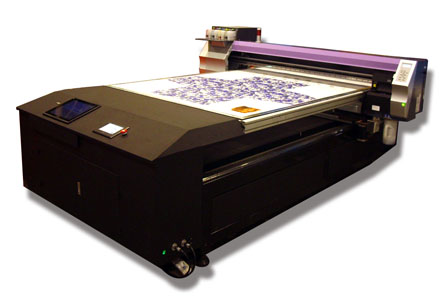What is Focus digital CTS computer direct to screen printer, flat bed inkjet engraver rotary inkjet engraver?
CTS is the short for Computer-to-Screen, Following in the footsteps of offset lithography, the screen printing industry has seen a dramatic technology shift in its pre-press department with the advancement and acceptability of CtS devices. One of the biggest advantages in using a CtS system is the use, storage and potential for film loss or damage is eliminated, reducing the overall cost of making a screen.
CtS systems always called as CTS computer direct to screen printer. they are also accurate and repeatable. Because the artwork is imaged directly to the coated screen, a vacuum blanket is not required during exposure, which removes any possibility of film distortion. Since there is no film, exposure time decreases and the amounts of light scatter and stencil undercutting are greatly reduced. Film dust and scratches also aren't a headache for the screen maker.
The four primary imaging technologies used in CtS systems are inkjet, thermal, Digital Light Processing (DLP) and laser. Each has its advantages and disadvantages, but there is not doubt our industry is moving heavily toward CtS in general. What appears to be cutting-edge today will be commonplace tomorrow, as more companies adopt these technological advantages to increase their margins and reduce costs.
Inkjet employs the use of conventional, water-based ink or solid wax, which is jetted directly to a coated screen and exposed. Devices using conventional ink typically utilize Epson print heads, and can reach resolutions of 600dpi to 1440dpi. They are a cost-effective alternative to solid wax systems, which have slightly higher consumable costs. Since the ink is water-based, environmental conditions play a crucial role as day-to-day fluctuations in humidity can make repeatability a bit more challenging. On the upside, print head replacement in water-based systems is relatively inexpensive when compared with wax. Those prices range from a few hundred dollars. it is also cost less compare with the traditoncal silk screen printing film expose way, as film cost, expose machine cost, expose time cost, labour cost.
Solid wax systems have a maximum resolution of 1300 dpi and employ the use of water-soluble wax tablets, which are heated in the CtS device. The molten wax is jetted onto a coated screen where it solidifies, producing great detail at densities at or above 4.5 D-max. Imaging speed will vary based on the selected resolution and number of nozzles in the print head, but printing speeds of 1-square-meter (10.75-square-feet) in a few minutes are not uncommon.
consider how much your company spends on film each year; an inkjet system may pay for itself in a very short time. Several hundred early adopters of these systems have converted from traditional film - with costs of about $10 per square meter ($1 per square foot) - to inkjet, and are now spending as little as 5 cents per screen in consumables.

Focus CTS-160ES flat bed inkket engraver
Authored by: Focus digital technology co.,ltd. www.focusdgt.com
|